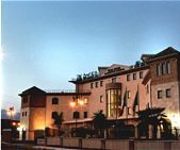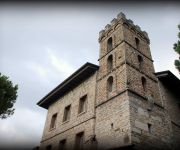Facts and Data
Webpages:
Official Unesco Page
View photos from OUR PLACE the World Heritage collection
ITINERARI ROMANI - Tivoli: Villa Adriana
Hadrian's Villa, Tivoli
Basis Data:
Unesco World heritage since: 1999
Size of heritage: 80 ha
- Buffer zone: 500 ha
Coordinates:
Longitude: 12,772°
Latitude: 41,944°
Summary
The Villa Adriana (at Tivoli, near Rome) is an exceptional complex of classical buildings created in the 2nd century A.D. by the Roman emperor Hadrian. It combines the best elements of the architectural heritage of Egypt, Greece and Rome in the form of an 'ideal city'.
Location on Map
Show bigger map on Openstreetmap
Introduction
Villa Adriana, located in Tivoli, Italy, is a UNESCO World Heritage site that showcases the grandeur and architectural brilliance of the Roman Empire. Built during the 2nd century AD, this sprawling complex served as the luxurious retreat of Emperor Hadrian. Today, it stands as a testament to the opulence and cultural significance of ancient Rome.
History
Villa Adriana was commissioned by Emperor Hadrian, who ruled from 117 to 138 AD. Hadrian was known for his love of Greek culture and architecture, and he sought to recreate the splendor of ancient Greece within the villa's grounds. The construction of the villa began around 118 AD and continued for several years, with Hadrian personally overseeing the design and execution of the project.
The villa was designed to reflect Hadrian's diverse interests and served as a retreat from the bustling city of Rome. It encompassed an area of approximately 120 hectares and featured a wide range of structures, including palaces, temples, libraries, theaters, and gardens. The architectural styles incorporated in the villa ranged from Greek and Egyptian to Roman and Oriental, showcasing the emperor's appreciation for different cultures.
Current State
Today, Villa Adriana stands as a remarkable archaeological site that offers visitors a glimpse into the grandeur of ancient Rome. The complex is spread across a vast area, and although many of its structures have been damaged or destroyed over the centuries, the remaining ruins are still awe-inspiring.
One of the most well-preserved areas of the villa is the Canopus, a large rectangular pool surrounded by columns and statues. This area was inspired by the city of Canopus in Egypt and served as a place for relaxation and entertainment. The Maritime Theater, another notable feature, was a circular island surrounded by a moat, which was used for private performances and gatherings.
The Pecile, a long portico adorned with statues, was a central gathering place within the villa. It provided a stunning view of the surrounding landscape and was used for various social and cultural activities. The villa also contained several thermal baths, reflecting the Romans' love for bathing and relaxation.
Despite the damage inflicted on the site over the centuries, ongoing restoration efforts have helped preserve and protect the remaining structures. Visitors can explore the ruins and gain insight into the architectural and cultural achievements of the Roman Empire. The site also offers guided tours and educational programs to enhance the visitor experience.
Conclusion
Villa Adriana in Tivoli, Italy, is a UNESCO World Heritage site that showcases the architectural brilliance and cultural significance of ancient Rome. Built during the 2nd century AD, this sprawling complex served as Emperor Hadrian's luxurious retreat. Although many structures have been damaged or destroyed over time, the remaining ruins provide a fascinating glimpse into the opulence and grandeur of the Roman Empire. Villa Adriana stands as a testament to the enduring legacy of ancient Rome and continues to captivate visitors from around the world.
Hotels and places to stay
OC Hotel Villa Adriana
Park Hotel Imperatore Adriano
Torre Sant Angelo
Victoria Terme
Hotel Dimora Adriana
Le Rose
Il Grottino
Bed&breakfast Villa Adriana
Palazzo Santori
Agriturismo La Meridiana
Videos from the area
Videos provided by Youtube are under the copyright of their owners.

















